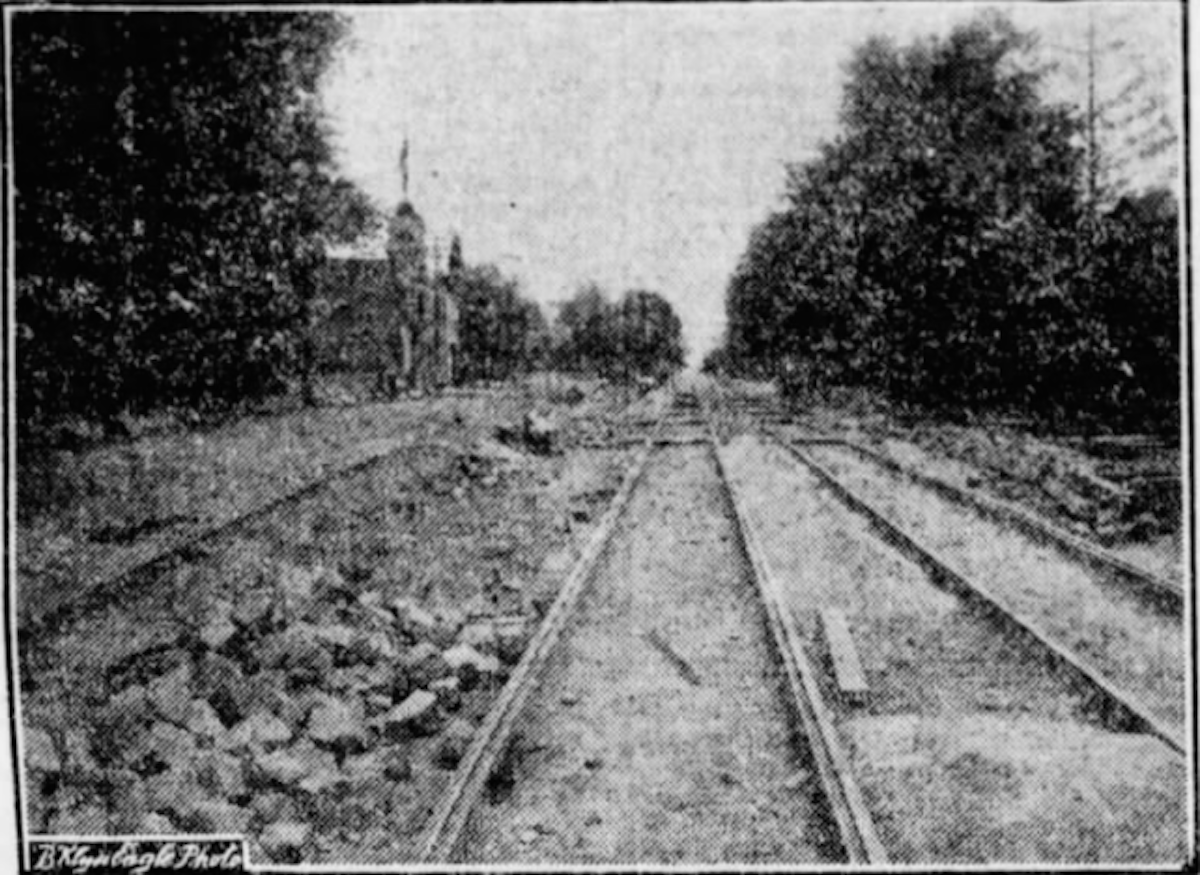When Church Avenue Was Crooked


Our friends at the Brownstone Detectives did a wonderful post last year about the straightening of Church Avenue over 100 years ago.
As they describe — before the town of Flatbush was incorporated into the rapidly growing city of Brooklyn in 1894, “it was still a rustic expanse of farmland, dirt roads, and farmers.” Church Avenue, which Brownstone Detectives say used to be called “East Broadway,” had long been a country road that ran alongside area farms.
Subsuming once-rural Flatbush into Brooklyn was a challenge for city officials at the end of the 19th century:
“One of the challenges Brooklyn faced – which Brooklyn had taken on some 50 years earlier itself – was making the Flatbush roadways congruent with the rest of Brooklyn’s streets and avenues. This challenge would prove to be even more decidedly troublesome as the Department of Streets began to study the lay of the farmlines which made up the old town [Flatbush].
Nearly all of them – in the 1600s – were set at an angle.”
But New York City — and Brooklyn– were undergoing tremendous population growth, and Flatbush was rapidly urbanizing. In 1903, city officials made the decision to better align Church Avenue with Brooklyn’s street grid. (By this point, Brooklyn had been incorporated into the City of New York.)
A September 10th, 1904 article in the Brooklyn Daily Eagle describes how Church Avenue, east of Flatbush Avenue, was “almost serpentine in its course.”

By 1903, of course, Church Avenue was no longer a country road — it was “lined with houses, businesses, and tall mature shade trees,” say Brownstone Detectives. Straightening the meandering street “was going to be no easy sell to the locals.”
“In order to bring about the reshaping of this thoroughfare, though, a number of public hearings were to be held, legal cases determining ownership of land adjudicated, and numerous complaints against the changes heard.”
Despite at least some community opposition, the residents of the old town of Flatbush were no match for New York City’s Corporation Counsel and Comptroller, describe Brownstone Detectives.
And like so many “development” projects to come, part of Church Avenue’s history was lost when it was rebuilt to conform with Brooklyn’s street grid and accommodate a growing population.
As the Brooklyn Daily Eagle reported in 1904, “to straighten the avenue, it was necessary to remove a number of buildings and when this was done the famous old Church avenue fire house was razed.”
[Check out Brownstone Detectives’ post to see before and after maps of the straightening of Church Avenue.]




